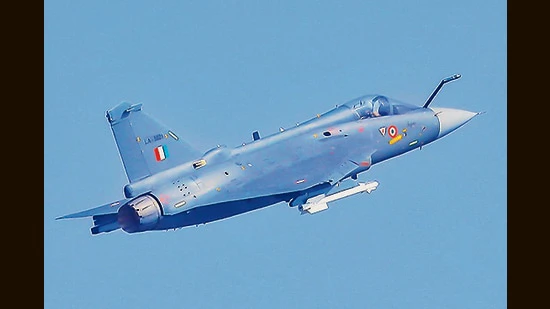Quicker induction of fighter jets, mid-air refuellers and airborne early warning and control (AEW&C) systems tops the recommendations made by an empowered committee for capability enhancement of the Indian Air Force, people aware of the matter said on Monday, adding that the government is in the final stages of awarding a ₹67,000-crore contract to Hindustan Aeronautics Limited for 97 more light combat aircraft Mk-1As.
“The panel reviewed every element of capability development and suggested measures to boost the IAF’s operational readiness in a time-bound manner. New fighters, refuellers and AEW&C systems are among the top priorities. These platforms are in different stages of the procurement cycle,” said one of persons cited above, asking not to be named.
Defence secretary Rajesh Kumar Singh, who chaired the committee submitted the report classified as “secret” to defence minister Rajnath Singh in March, days after chief of the air staff Air Chief Marshal AP Singh admitted that the air force was “very badly off in numbers”, adding that it must induct 40 fighter jets every year to stay combat-ready.
The committee’s members included the vice chief of air staff, secretary (defence production), DRDO chief, and director general acquisition, with the deputy chief of the air staff being its member secretary.
The panel recommended a raft of short and long-term measures to boost the capabilities of the IAF, which is grappling with a shortage of fighter squadrons, pointing out that it was critical to enhance self-reliance in the aerospace sector through increased participation of the private sector to fill critical gaps.
“The committee has recommended a larger role for the private sector. The public sector has its strengths and the first-mover advantage. But the country needs to build a larger defence base to meet the growing needs of the IAF,” said a second person, who also asked not to be named.
After the committee submitted its report, the defence ministry in May unveiled its long-awaited plan to fast-track the development of an indigenous fifth-generation stealth fighter, or the advanced medium combat aircraft (AMCA), announcing that the execution model will be competitive and provide equal opportunities to public and private sector firms to participate in one of the country’s most significant military projects.
The committee’s recommendations are being implemented at a critical moment as the IAF is scouting for 114 multi-role fighter aircraft to be made in India by a foreign original equipment manufacturer and a local partner.The recommendations are in the process of being implemented in the backdrop of Operation Sindoor, India’s strike on terror and military installations in Pakistan and Pakistan occupied Kashmir, carried out in response to the Pahalgam terror attack. The Indian Air Force played a central role in the operation.
“The IAF is planning to move the case for the 114 new fighters. The MRFA programme will be accelerated once the execution model is finalised. Also, the follow-on order of 97 LCA Mk-1As will be placed soon,” said the first person. The air force has around 30 fighter squadrons compared to an authorised 42.5.
The defence minister has ordered top officials to ensure timely implementation of the empowered committee’s wide-ranging recommendations.
The techno-commercial bids for six more mid-air refuellers are expected to be opened shortly, the second official said, adding that European, Russian and Israeli defence contractors are vying for the order. The IAF operates a fleet of six Russian-origin Ilyushin-78 tankers that are plagued by maintenance problems and the force urgently needs at least six more refuellers.
In February, the defence acquisition council approved several key proposals worth ₹84,560 crore to strengthen the military’s operational readiness, including the purchase of more mid-air refuellers.
The refueller procurement, which comes in the backdrop of previous failed attempts to buy new tankers, is being pursued at a time when a high-powered defence ministry committee — steering a comprehensive review of India’s arms-buying rules — is looking at shortening actual acquisition timelines from the current seven-eight years to under two years for speedy modernisation of the armed forces.
The panel, headed by director general (acquisition), has identified three key areas that account for delays in the procurement of critical weapons and systems, including preparation of the request for proposal (RFP), field evaluation trials and contract negotiations.
Also, the Cabinet Committee on Security, chaired by Prime Narendra Modi, is expected to clear the construction of six AEW&C systems based on the Airbus 321 platform, as reported by HT on July 19.
Air Chief Marshal AP Singh has publicly flagged concerns about a worrying erosion of capabilities and called for urgent measures to address it.
